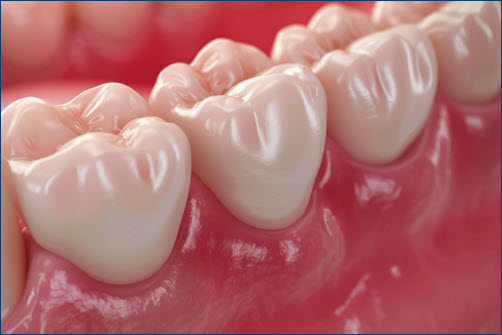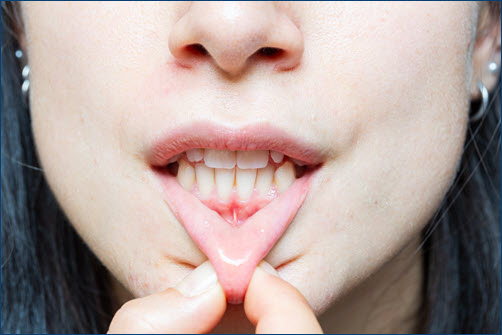Gum Recession: Prevention and Correction
Gum recession is a common dental issue where the gum tissue that surrounds the teeth pulls back or wears away. This exposes more of the tooth or its root. This can lead to increased sensitivity, higher risk of decay and infection, and aesthetic concerns. Understanding how to prevent and correct gum recession is crucial for maintaining healthy gums and teeth. Here’s what you need to know about it and how to address it effectively.
What Causes Gum Recession?
Gum recession can result from various factors, including:
 Poor Oral Hygiene: Inadequate brushing and flossing can lead to plaque buildup, which can cause gum disease, a major contributor.
Poor Oral Hygiene: Inadequate brushing and flossing can lead to plaque buildup, which can cause gum disease, a major contributor.- Gum Disease: Periodontal disease, which includes gingivitis and periodontitis, is a bacterial infection. It damages gum tissue and the supporting bone, leading to recession.
- Aggressive Brushing: Brushing too hard or using a toothbrush with hard bristles can wear away the enamel on your teeth and contribute.
- Genetics: Some people are more susceptible to gum disease and recession due to their genetic makeup.
- Hormonal Changes: Changes in hormones, such as during pregnancy or menopause, can make gums more sensitive and vulnerable.
- Tobacco Use: Smoking or chewing tobacco can damage gum tissue and increase the risk.
- Teeth Grinding and Clenching: These habits can put excess force on the teeth, leading to gum recession over time.
- Crooked Teeth or Misaligned Bite: Misalignment can cause uneven pressure on the gums and teeth, leading to recession.
Preventing Gum Recession
Preventing it involves maintaining good oral hygiene and adopting healthy habits. Here are some tips to help prevent the issue:
- Brush and Floss Regularly: Brush your teeth twice a day using a soft-bristled toothbrush and fluoride toothpaste. Floss daily to remove plaque and food particles from between your teeth and along the gum line.
- Use Proper Brushing Technique: Use gentle circular motions rather than back-and-forth scrubbing to avoid damaging your gums. Consider using an electric toothbrush, which can be more effective at removing plaque without applying excessive pressure.
- Regular Dental Checkups: Visit your dentist regularly for cleanings and checkups. Professional cleanings can remove tartar that you can’t remove with regular brushing and flossing.
- Quit Smoking: If you use tobacco products, seek help to quit. Smoking can exacerbate gum problems and lead to more severe instances.
- Wear a Mouthguard: If you grind or clench your teeth, wearing a mouthguard at night can protect your teeth and gums from excessive force.
- Eat a Balanced Diet: A diet rich in vitamins and minerals can support gum health and boost your immune system.
Correcting the Problem
If you already have gum recession, there are several treatment options available:
- Scaling and Root Planing: This deep cleaning procedure removes plaque and tartar from below the gum line and smooths the root surfaces, helping gums reattach to the teeth.
- Gum Grafting: In more severe cases, a gum graft may be needed. This surgical procedure involves taking tissue from another part of your mouth and attaching it to the affected area to cover exposed roots and support gum health.
- Pinhole Surgical Technique: This minimally invasive procedure involves making small holes in the gum tissue and using special instruments to loosen and reposition the gums over the exposed roots.
- Orthodontics: If misaligned teeth are contributing to gum recession, orthodontic treatment can correct the bite and alleviate pressure on the gums.
Gum recession is a common issue that can have serious consequences if left untreated. By maintaining good oral hygiene and addressing any underlying risk factors, you can prevent gum recession and protect your oral health. If you notice signs of gum recession, such as tooth sensitivity or visibly receding gums, consult with your dentist to explore the best treatment options for your situation. Early intervention can help preserve your gums, enhance your smile, and ensure long-term dental health.















